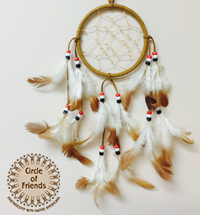| Home | About Us | Services | Success Stories | How to Help | Resources |
 |
of Plains Indians American Horse Amos Bad Heart Bull Ben Nighthorse Campbell Big Foot Black Elk Crazy Horse Dull Knife Francis La Flesche Gertrude Simmons Bonnin Little Wolf Oscar Howe Plenty Coups Red Cloud Robert Eugene Megginson Sacajawea Sitting Bull Spotted Tail Standing Bear Susan La Flesche Susette La Flesche Washakie History and Culture Reservations Living Conditions Site Map FAQs Gift Catalog IRS Form 990 |
Biographies of Plains Indians Sitting Bull — 1831-1890 Arguably the most famous American Indian in history, Sitting Bull was a major military, spiritual and political leader of the Sioux people during the 1800s. His name translates as “a large bull buffalo at rest.” A Hunkpapa Sioux, he was born at a site along the Grand River in Dakota country. As a child he was called “Slow” and sought at an early age to rise above the nickname. At ten he killed his first buffalo and at fourteen counted his first coup on an enemy and received his adult name. By 1856 he was the leader of the Strong Heart Warrior society. Sitting Bull’s enemies held his name in such awe that his followers could intimidate them by just shouting “we are Sitting Bull’s boys.” He grew to be not only a great warrior, but also a holy man of his people following the traditional ways of life and refusing to abide by the territorial provisions of the Ft. Laramie Treaty signed by Red Cloud in 1868. When George Armstrong Custer invaded the sacred Black Hills in 1874 Sitting Bull played a key role in gathering Lakota and Cheyenne warriors to defend their land. When the U.S. government ordered all hunting bands to report to U.S. Government agencies attached to reservations, the line was drawn. By June of 1876 a village of between twelve and fifteen thousand Plains Indians had assembled along the Little Bighorn River. A Sun Dance Ceremony was held and Sitting Bull performed the dance for thirty-six straight hours. At the end of the dance Sitting Bull told his people of his vision of seeing U.S. Army troops being defeated. On June 17th warriors under Sitting Bull engaged the forces of General George Crook in the Battle of the Rosebud and sent the U.S. troops into retreat. On June 25th General George Custer attacked the native warriors on their home ground and twenty minutes later the battle was over. Custer and his entire force of 225 men were destroyed. Sitting Bull said of the battle, “Let no man say that this was a massacre. They came to kill us and killed themselves.” After the battle, Sitting Bull and his followers fled to Canada where they stayed for four years. But at the end of the four years they finally gave up. When Sitting Bull and his band surrendered in 1881 at Ft. Buford, North Dakota , his once vast following now contained 44 men and 143 women and children. Sitting Bull was held a prisoner until 1883 when he was allowed to settle on the Standing Rock Reservation. He joined Buffalo Bill Cody’s Wild West Show in 1885 and 1886 and then returned to the Reservation. He continued to oppose the selling of Indian land. Although he adopted the farming lifestyle and sent his children to reservation schools, Sitting Bull maintained that he “would rather die an Indian than live a white man.” In the late 1880s many Sioux began practicing the Ghost Dance religion that claimed to be able to restore the Native American way of life. Sitting Bull supported the movement and in 1890, agents of the Office of Indian Affairs tried to arrest him. Accounts vary, but it appears that government-paid Indian police officers came to serve him with a warrant. Officer Bullhead shot Sitting Bull in the thigh when Sitting Bull protested and then Sergeant Red Tomahawk shot him in the head. Following the assassination a riot erupted and six policemen and eight of Sitting Bull’s followers, including his son Crow Foot, were killed. |
Join our Circle of Friends - make a monthly gift!
We call this group Circle of Friends, because a friend is someone who makes a lasting commitment. You will receive* a free "thank you" gift for donating monthly: a beautiful dreamcatcher. (* While supplies last.) |





